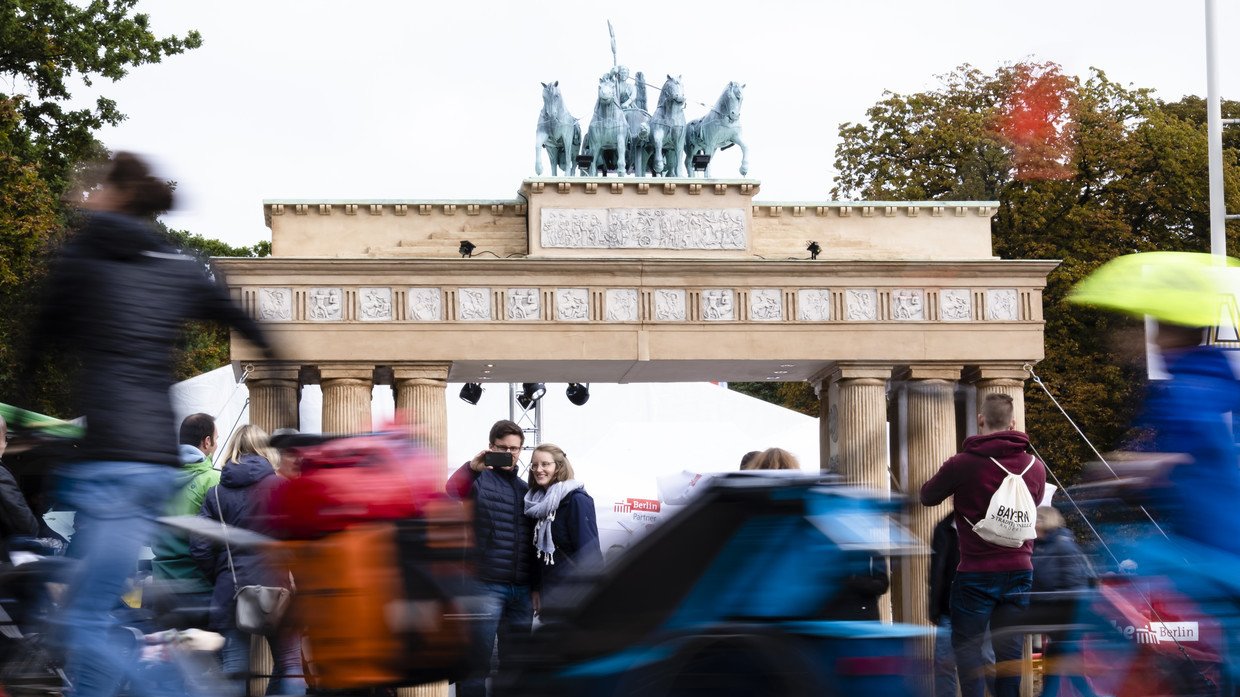It's Unity Day in Germany, one of the most cherished dates in its modern history. Hopes ran high after the fall of the Berlin Wall, but despite huge money injections, lingering inequality still bites eastern Germany.
Celebrated every year on October 3, German Unity Day marks the anniversary of reunification between the Federal Republic of Germany (BRD) and the socialist German Democratic Republic (DDR) in 1990. It came just a year after the fall of the Berlin Wall, a major symbol of the Cold War. Speaking ahead of the date, Chancellor Angela Merkel called the country's economic progress since then "a great success," but added that "there is still a lot to do."
Indeed, eastern Germans are no longer put on 13-year waiting lists to buy a Trabant – a tiny ride that was one of the most iconic symbols of the DDR. They also no longer have to queue for bread or dodge the prying eyes of the Stasi – the notorious state security service well-known and feared far beyond the German borders. But getting rid of it did not create a BRD 2.0 for the people in the former socialist part of the country.

Integrating two countries with polar opposite political systems, as well as huge disparities in income and life expectancy, has been an expensive endeavor. Researchers calculated that between 1990 and 2014, reunification cost just short of two trillion euros. This includes various direct cash transfers, EU subsidies, and social security transfers.
The cash injection has been successful in many ways, most noticeably for eastern Germans in terms of the standard of living, life expectancy, and access to modern healthcare.
BMW land v Skoda country
However, eastern Germany remains considerably poorer than the west. Eastern Germans still work harder and for less money, receiving a paycheck 16.9 percent smaller than they would get in the west. There are fewer jobs for highly skilled workers in the east, and workers there put in between 56 and 61 more hours on the job each year. An easterner is also 25 percent more likely to fall into poverty than their western counterpart.
In addition, a 2015 report entitled 'How is reunification going?' revealed that the net wealth of the average westerner is around €153,200. For the average easterner, it's less than half of that. A visual illustration of the divide can be seen in the driveways and roads. A western German is twice as likely to drive a BMW, while an easterner is twice as likely to drive a Skoda.
Of the 500 richest Germans, only 21 live in the east, with 14 of them in Berlin. Of the 20 wealthiest cities, only one – Jena – is in the east. The situation is unlikely to change for the foreseeable future, according to Magdeburg economics professor and former finance minister of Saxony-Anhalt, Karl-Heinz Paqué. "We will have to settle for greater prosperity differences within Germany in the future," Paqué told Welt am Sonntag.
Exodus
But wealth alone does not define happiness. People want to believe that they live in a stable society where their voice matters. Even though an East German is the leader the country, nearly twice as many easterners (28 percent) are disillusioned with democracy in Germany. This dissatisfaction is highest among right-wing voters, many of whom feel left behind by Merkel's 'open door' immigration policies, and by the government's planned closure of coal mines – once the economic backbone of the east.
Amid relative economic hardship and political isolation, eastern Germany is experiencing an exodus, with residents heading for the west. According to a June study by the Ifo Institute for Economic Research, the number of people living in the east has fallen to a low not seen since 1905, while a record number of people live in the west. A further population drop of 12 percent is expected in the next 15 years.
The Ifo recommends boosting immigration from outside the EU to safeguard economic growth in the east, a proposal not likely to sit well with the disillusioned right-wing voters mentioned above.
Silver linings
It's not all doom and gloom though. Lower wages in the east mean lower rent, and some positive legacies of communism live on in the east. Schools in the east top the rankings, with students performing best in math, chemistry, biology, and physics. More women are employed in the east than in the west, a holdover of the socialist state that encouraged maximum participation in the labor force.
As a result, the gender pay gap is lower in the east, and childcare facilities are more readily available.
Chancellor Helmut Kohl promised East Germans "blossoming landscapes" upon reunification, "worth living and working in." As Germany celebrates the realization of Kohl's dream this week, not everyone would agree that his vision was fulfilled.
Subscribe to RT newsletter to get stories the mainstream media won’t tell you.

